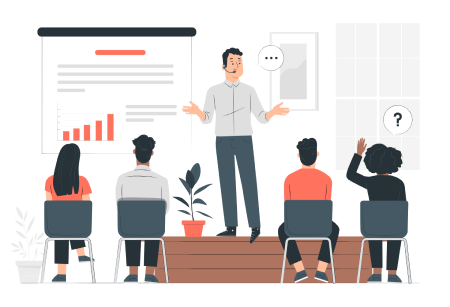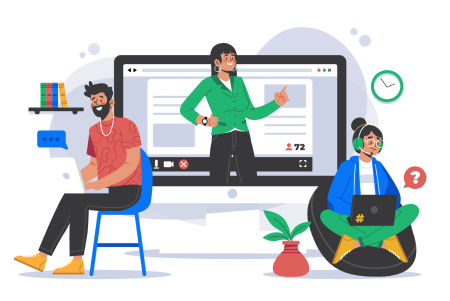Good work culture is defined by many factors, like team relationships, leadership, role attribution and growth opportunities. Cultures focused on the people or team members, bring long-term benefits with better performance, satisfaction and retention rates.
One step to building an active people- centre culture is workforce development. Workforce Development is a crucial step to ensure employees stay, teams grow and businesses see long-term benefits.
What is workforce development?
It is a people-first approach, where the skill requirements of the workforce and the market are given priority. The goal is to build a work culture which provides upskilling and development opportunities to the right people at the right time.
This not only maximises career success for the learner but also has long-term benefits for the business.
Why is it important?
Workforce development is crucial to boost skills, morale and retention of people in the organisation. It supports the business to stay relevant and meet the challenges of the changing times.
A workforce development strategy helps organisations set clear objectives and skill requirements for their business to grow. It enables teams to identify current challenges and predict future requirements.
1 Build productivity: Productivity has been a buzzword, and a concept significant to teams and businesses. Workforce development can help employees become more productive and efficient in their roles. By providing training and development opportunities, businesses can equip employees with the skills and knowledge they need to excel in their jobs. This can lead to improved productivity, higher quality work, and increased revenue for the company.
2 Builds edge for the business: Workforce development can help businesses stay competitive in a rapidly changing market. By investing in training and development, businesses can ensure that their employees have the skills and knowledge needed to adapt to new technologies and trends in the industry. This can help the company stay ahead of the competition and remain relevant in the marketplace.
3 Investing in employee retention: Investing in workforce development can also help businesses retain top talent. When employees feel that their employer is invested in their development and growth, they are more likely to stay with the company long-term. This can reduce turnover rates and help businesses maintain a stable and dedicated workforce.
As per Linkedin, organizations with high internal hiring experience have 41% longer employee lifetime than organizations with low internal hiring.
4 Skill gaps: Traditional education can build basic skills for a professional, but continuous upskilling is extremely important for a business to stay relevant and succeed. By providing training and development opportunities, businesses can help bridge these gaps and ensure their workforce has the skills needed to succeed.
5 Creating a positive work environment: Finally, workforce development can help create a positive work environment. When employees feel that their employer is invested in their growth and development, they are more likely to feel valued and engaged in their work. This can lead to improved morale, job satisfaction, and overall happiness in the workplace.

How to build the culture?
1 Skill Mapping: It helps organisations to identify skill gaps, plan strategically for the future, support career development, build the right training and development programs, inform recruitment and hiring decisions, and measure and track employee performance. By investing in skill mapping, organisations can ensure their workforce has the necessary skills and knowledge to succeed in today’s fast-paced and ever-changing business environment.
2 Setting learning objectives: In each phase of employee development and cycle, learning requirements differ. Hence, with a combination of expert perspective and organisational requirements- the right program structure can be churned out. At Zenfide, our programs are curated and customised, as per learners’ requirements and with what technique works well for the cohort.
3 Start from the basics: To integrate learning within an organisational structure, at each level, learning and development programs need to be integrated. This creates learning as part of routine and habits.
4 Reinforce: Short and spaced reinforcements of information can lead to longer retention and skill building. Repetition is an integral part of learning. When a message or information is repeated, the brain gets used to and understands it. At Zenfide, we build different nudges to reinforce and restructure the habits of the teams.
Workforce development is key to building a people-centric work culture. To start with this, build a learning program with our team, for your team.









